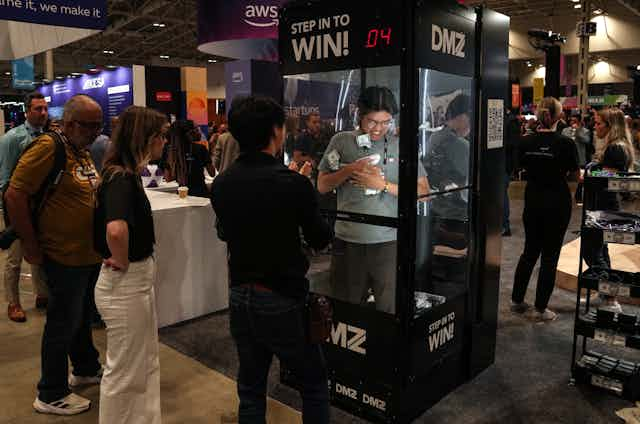The Canadian government has announced a new strategy to entice tech workers from around the globe to work in Canada. The Tech Talent Strategy was announced by Immigration Minister Sean Fraser at the Collision technology conference in Toronto on June 27.
The new strategy is embedded within the broader Global Skills Strategy program that helps businesses hire skilled workers from around the world.
The Tech Talent Strategy is built on several key pillars, including creating a work permit stream for U.S. H-1B visa holders to work in Canada, expanding the International Mobility Program, promoting Canada as a destination for “digital nomads” and improving the Start-up Visa Program.
These pillars are designed to ensure that Canada is not only filling in-demand jobs, but also attracting the talent necessary to create the jobs of tomorrow.
However, despite the commendable vision, it’s crucial to acknowledge the challenges that could impede the Tech Talent Strategy’s success.
New visa work permit
As part of the new strategy, the federal government will open a work permit stream for American H-1B visa holders to work in Canada. The H-1B visa program allows U.S. companies to employ foreign workers in specialized occupations.
The H-1B visa acts as a powerful magnet for tech professionals, who are enticed by the opportunities and salaries afforded by the U.S. tech industry.
This part of the strategy prompts a critical question: Can Canada really compete with the U.S. in the tech realm?

The U.S. tech industry is famed for its high salaries, making the financial aspect a significant consideration for H-1B recipients contemplating a move to Canada.
Canada versus U.S. tech firms
A 2022 tech industry salary report found that entry-level engineers at top companies in New York and San Francisco earned around US$274,000 and US$266,000 respectively. While Canada’s tech industry is growing rapidly, it still has some way to go to match these salary levels.
Additionally, the disparity in scale between the tech industries in Canada and the U.S. presents another significant hurdle. The Canadian tech sector is still overshadowed by the size and influence of its American counterpart.
Shopify, one of the largest tech companies in Canada, is still significantly smaller than U.S. tech giants like Apple, Microsoft and Amazon that all have market caps surpassing US$1 trillion. In comparison, Shopify’s market cap is only C$193.6 billion.
Canadian tech firms also face challenges when it comes to scaling up their operations to compete with U.S. firms. These challenges include finding and retaining talent, managing cash flow, maintaining a consistent company culture and dealing with increased competition.
Because Canadian tech firms often face challenges in scaling up due to a lack of capital-rich markets, they often move to the U.S. to access its tech sector infrastructure.
The stark differences in scale between Canadian and U.S. tech firms could affect the effectiveness and appeal of Canada’s Tech Talent Strategy.
Local impacts
Another potential pitfall lies in the strategy’s local impacts. Encouraging an influx of foreign workers in a highly competitive industry like tech could inadvertently sideline local talent. Striking a balance between the interests of foreign tech professionals and local workers is paramount.
In addition, Canada’s ambitious goal of admitting 500,000 immigrants a year by 2025 adds another layer of complexity to these challenges.
This immigration target could strain the local job market, especially in the tech sector. The Tech Talent Strategy must ensure it complements, rather than competes with, the development of local talent to create a harmonious tech ecosystem that benefits all.
Substantial infrastructure and resources are needed to sustain such an increase. Careful planning and investments are needed.
Proceed with caution
While Canada’s Tech Talent Strategy marks a promising development, it is far from a smooth ride. The success of this ambitious project hinges on numerous factors, including attracting H-1B visa holders, fulfilling immigration targets and balancing the needs of foreign and local workers.
This complex endeavour demands careful, strategic planning and execution. To ensure the strategy’s success, Canada needs to nurture more homegrown tech companies, restructure the industry’s scale, improve access to funding for tech firms and invest in local tech talent education.
With these strategies in place, Canada can genuinely foster a balanced tech ecosystem characterized by a diverse mix of small, medium and large companies, a network of tech-savvy investors and a system that balances immigration and local talent development.
It will be fascinating to see how the strategy evolves and the ensuing impact on Canada’s tech industry and the broader economy.

